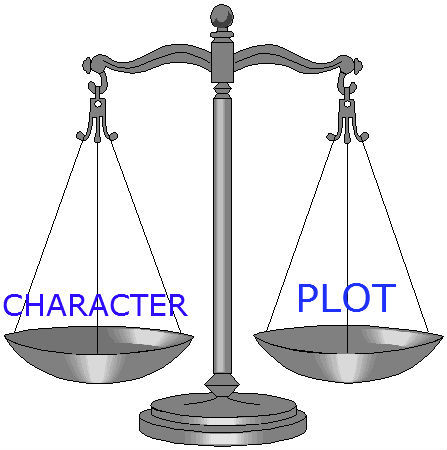
One of the biggest issues I’ve faced as a writer is how to get Plot and Character to work together.
Today begins week two of a two week mini-series on Plot in 101 Things I Wish I’d Known Before I Wrote My First Book. Next week, I’ll start talking in depth about character, but I wanted to use today’s post to talk about what I’ve learned about managing plot and character together.
Plot and Character are often at odds in fiction. We speak of books being either plot driven or character driven. Many writers, novice and experienced, claim to be strong in one and weak in the other. But, much as we’d like to, it is impossible to completely separate the two. Plot and Character are intricately entwined and the better they work in synergy, the better the story is.
Plot is not just what happened, it is what happened to the characters or what did the characters do. The most plot driven fiction in the universe still needs people for the plot to happen to. And the most character driven fiction still needs the characters to do something. Otherwise it’s just a character sketch, not a story.
I personally fall into the plot driven category of writers. When I started writing, my stories were long strings of, “then this happened, and this happened, and this happened.” I had to train myself to think in terms of character. Even now, when I’m planning a book, I rarely think in terms of “where does the character want to go,” but rather, “how to I get the character to point B?”
This is problematic, because all fiction, including genre, is at its strongest when it is driven by strong character motives. The trick is not to force the characters to fit the plot, but to use the motives of the characters to shape the plot.
Of course, it’s not that easy either (nothing in writing ever is) because plot and character are entwined; as things happen to your characters, their motives can change. For example, say your book starts with a woman protecting her child from bad people who want to kill him. The motive of protection will be driving her actions. Say the child is then killed. The motive of protection will no longer be driving the woman; instead a new motive will arise (perhaps revenge, in this case) which will then inform her actions. A protective woman is a much different character from a woman with nothing to lose, bent on revenge.
If you have multiple POV characters and large, convoluted plots, all these shifting motives can get messy in a hurry. The way that I personally navigate this mess is the same way I get around a lot of writing problems, by careful planning.
Last year when I was drafting a plot summary for Dream of a City of Ruin, I kept running into this issue of plot and character not quite meeting in the middle. So I tried something new: I drafted a concurrent character summary for each POV character. Just as the plot summary stated the basic events of the overall story, the character summary stated the feelings and motives of the characters as they changed throughout the book. If I changed a plot event in the summary that would change a character motive, then I could go to the character summary and adjust their trajectory. If a character motive popped up that would shift events in a different direction, I could adjust the plot to accommodate it.
The beauty of this pre-planning was that I could work out how the plot and characters would entwine throughout the book in just twenty pages, not 180K words. It also made me see that there are two distinct (though related) arcs in every book: the plot arc, and the character’s arc (actually, there are as many character’s arcs as there are major characters).
What if you’re not a planner? Enter at your own risk, pantsers. But I venture to guess that just being aware of plot arcs vs character arcs can be useful for those of us struggling to balance the two. Just be aware of when a plot event changes a character’s motives, and when changing motives drive the plot in a different direction. And allow it to happen. Otherwise you might find yourself writing pages and pages of plot that is not motive driven. Pages that you’ll have to scratch later, when you realize where the plot actually needed to go.
Tomorrow: 101 TIWIK #19: Beware of Subplots
This post is part of a series of 101 Things I Wish I’d Known Before I Wrote My First Book. Start reading the series at the beginning.



3 thoughts on “101 TIWIK #18: The Struggle Between Plot & Character”
Great description of this dilemma, and good suggestion for how to sketch out the plot and character arcs briefly! Thanks!
Thank you Virginia, glad it was useful!